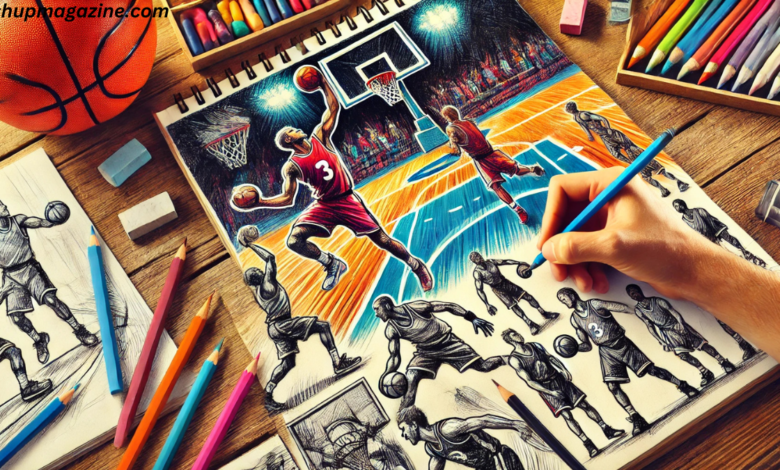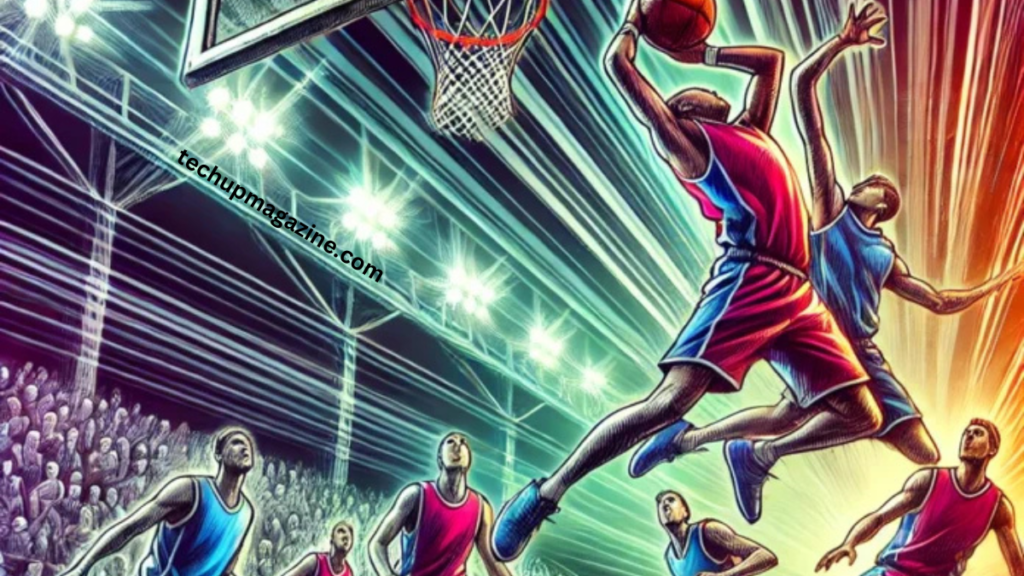Mastering drawing:_tpnhdiv3r8= basketball: Techniques, Tips, and Insights

Introduction to drawing:_tpnhdiv3r8= basketball
drawing:_tpnhdiv3r8= basketball is a dynamic and exciting sport, capturing the imaginations of millions worldwide. For artists, capturing the essence of basketball on paper offers a creative way to explore movement, athleticism, and the intense energy that the sport embodies. Whether you’re a seasoned artist or someone just starting out, learning how to draw basketball players, balls, and related elements can be a fulfilling endeavor drawing:_tpnhdiv3r8= basketball.
In this guide, we’ll delve deep into the art of drawing basketball, from basic shapes and proportions to more advanced techniques like shading and detailing. By the end, you’ll be well-equipped with the knowledge and skills necessary to create impressive basketball-themed artwork. Let’s begin this creative journey drawing:_tpnhdiv3r8= basketball!
Understanding the Basics of drawing:_tpnhdiv3r8= basketball

Before diving into the specific techniques for drawing:_tpnhdiv3r8= basketball scenes or players, it’s important to get a solid understanding of the fundamentals. Drawing is a skill that builds upon basic concepts, so grasping these early will set you up for success drawing:_tpnhdiv3r8= basketball.
Drawing Simple Shapes
At its core, drawing:_tpnhdiv3r8= basketball is the process of representing objects and ideas through shapes. When it comes to drawing basketball, much of it involves understanding and drawing circles and cylinders. The basketball itself, for example, is a simple sphere. Meanwhile, the human body, which you’ll encounter when drawing players, can be broken down into basic shapes such as ovals for the head, rectangles for the torso, and cylinders for the arms and legs drawing:_tpnhdiv3r8= basketball.
Proportions in drawing:_tpnhdiv3r8= basketball
Proportions play a crucial role in making your drawings look realistic. When drawing a basketball player, the height, limb length, and overall body ratio should be as accurate as possible. Start by sketching a basic framework using these shapes and proportions. This will serve as the skeleton for your drawing, allowing you to build on it gradually by adding layers of detail drawing:_tpnhdiv3r8= basketball.
Drawing a drawing:_tpnhdiv3r8= basketball
The basketball itself is one of the simplest elements to start with, yet it’s a great exercise in understanding circles, perspective, and texture. Let’s break down the steps to get a detailed basketball on paper drawing:_tpnhdiv3r8= basketball.
Drawing the Outline
Begin with a light circle sketch. Use a compass or freehand technique, depending on your skill level. Make sure the circle is even, as this forms the foundation of your basketball. A slightly uneven circle can throw off the whole composition, so take your time perfecting this step drawing:_tpnhdiv3r8= basketball.
Once you have the circle, lightly sketch the seams of the basketball. These are the iconic curved lines that divide the ball into panels. Visualize the ball from different angles and draw the seams accordingly. If the basketball is being viewed from an angle, adjust the curve of the seams to match that perspective drawing:_tpnhdiv3r8= basketball.
Adding Depth with Shading
To give your basketball a realistic appearance, shading is essential. Start by identifying the light source—where is the light coming from? Once you determine this, begin shading the opposite side of the basketball to create a sense of depth. You can use hatching (parallel lines) or cross-hatching (intersecting lines) for this purpose.
Pay attention to how the light interacts with the texture of the basketball. Basketballs have a slightly rough texture, which reflects light differently than smooth surfaces. To achieve this look, add small dots or strokes to mimic the ball’s grainy surface drawing:_tpnhdiv3r8= basketball.
drawing:_tpnhdiv3r8= basketball Player
Drawing a basketball player introduces new challenges such as movement, proportions, and facial expressions. But with the right steps, you can capture the energy and action of a player in mid-motion.
Starting with a Basic Figure
To begin, lightly sketch the basic framework of the player. Use simple lines and shapes to outline the head, torso, arms, and legs. Keep in mind the proportions—basketball players tend to have long limbs and lean builds, so adjust your drawing accordingly. Focus on the overall posture and movement of the figure, making sure to reflect the dynamic nature of the sport.
As you progress, refine your lines and start to fill in the player’s muscles and body shape. Pay particular attention to the joints, as they are key to conveying realistic movement. For instance, when drawing a player dribbling, observe how their knee bends and their shoulder lowers.
Detailing the Jersey and Shoes
Basketball players’ jerseys are usually loose-fitting, which gives them a lot of folds and creases. Capture these details by sketching the jersey in a relaxed, flowing manner, paying attention to how it clings to the body in some areas and hangs loosely in others. Include the team logo, number, and other markings to give your drawing more authenticity.
Basketball shoes are another important detail. Since they are often bold and stylized, take some time to add details like the sole, laces, and logo. The shoes also play a role in grounding the player to the floor, so ensure that they align well with the player’s stance.
Capturing Motion in Basketball Drawing
Basketball is a fast-paced sport, and part of what makes it exciting to draw is capturing that motion. Whether it’s a player dunking or dribbling, movement adds life to your drawing.
Using Dynamic Poses
To give your drawing a sense of movement, try using more dynamic poses. A player standing still may be easier to draw, but a player in motion will make your drawing come to life. Consider drawing a player mid-jump or lunging forward to grab a rebound. When sketching these poses, exaggerate the angles slightly to emphasize the action.
Motion Lines and Shadows
Another way to illustrate motion is through the use of motion lines. These are subtle, curved lines that trail behind the player or ball, suggesting speed. Similarly, shadows can help give the impression of movement. A player in the air will cast a shadow on the floor, showing how far off the ground they are. Experiment with these techniques to add energy to your drawings.
Adding Emotion and Expression
Basketball is a sport filled with emotion—from the intensity of competition to the joy of victory. Capturing these feelings in your drawings will make them more compelling.
Drawing Facial Expressions
When drawing the face of a basketball player, start with a basic head shape and then focus on the expression. A player who is determined might have a furrowed brow and gritted teeth, while one celebrating might have a wide smile and raised arms. These small details can dramatically change the tone of your drawing.
Don’t be afraid to zoom in on the face and focus on the emotions. The eyes, in particular, can convey a lot of feeling, so make sure to capture the direction and intensity of the gaze.
Body Language and Gestures
Expressions aren’t limited to the face—body language plays a significant role as well. A player with arms raised in victory or crouched low in defense tells a story through their posture. Study real-life basketball games to understand how players use their bodies to communicate, and apply these observations to your drawings.
Incorporating Background and Environment
A drawing of a basketball scene isn’t complete without considering the background and environment. Whether you’re drawing a simple court or a full stadium, the setting adds context and helps place your characters in the world.
Drawing a Basketball Court
Start with the basic outline of the basketball court. This includes the key, free-throw line, three-point arc, and boundaries. Use perspective to show the court’s depth, giving the impression that the player is part of a larger scene. If you’re drawing an indoor court, add lines for the wooden flooring, which can also help guide your shading and light sources.
Adding Audience and Extra Details
If you want to take your drawing to the next level, consider adding an audience in the background. You don’t need to draw every person in detail, but a few scattered figures in the crowd can suggest the excitement of a live game. Add banners, team logos, and other details that make the environment feel authentic.
Coloring and Finalizing Your Basketball Drawing
Once you’ve finished your basic sketch and added all the necessary details, it’s time to bring your drawing to life with color.
Choosing the Right Colors
For basketball drawings, the most common colors you’ll use are orange (for the basketball), white (for the lines on the court), and various shades for the player’s jersey and shoes. Be sure to choose colors that contrast well so the key elements of your drawing stand out. Use lighter shades to highlight areas where the light hits and darker shades to add depth and shadow.
Blending and Shading with Colors
Color blending can add a polished finish to your drawing. Use softer pencils or markers to blend colors where necessary, such as shading around the basketball to create a three-dimensional effect. Shading can also be achieved with colored pencils, giving your drawing more texture and depth.
Conclusion
Drawing basketball is a rewarding challenge for any artist, allowing you to explore a range of techniques, from capturing motion to expressing emotion. By breaking down each component, from the ball to the players, you can approach your artwork with confidence and creativity. Whether you’re sketching a simple basketball or a complex scene of a game in action, the principles discussed in this guide will help you achieve professional and dynamic results.
With practice, your basketball drawings will not only reflect the energy of the sport but also showcase your unique artistic style. So, grab your pencils and start sketching your basketball masterpiece today!


